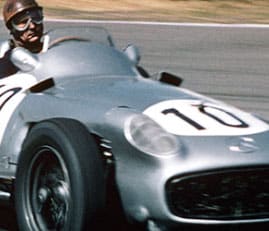Monza, Italy, September 12th
It is never very clear who instigates the changes to circuits, but the reasons are usually “in the interests of safety” though more attention could be paid to racing car design and manufacture, to say nothing of closer inspection of components. Teaching some drivers to drive more carefully could also add its quota to making motor racing safer. This year the Monza Autodromo has undergone some major changes in the interests of “safety” and the best thing that has happened is the total elimination of the stupid artificial chicane just beyond the end of the pits. Much further on, at the very beginning of the Curva Grande a new complex of two ess-bends joined by a short straight has been built. At the end of the main straight, instead of setting the car up for the challenging high-speed right-hand curve, you now brake really hard for a sharp left/right ess-bend, This is followed by a quick “squirt” to another left/right ess-bend and then you accelerate round what is left of the Curva Grande. This double-ess has been properly constructed with bevelled kerbs and grass verges and has been blended into the circuit remarkably well. If you overdo it on initial braking you can run straight on into a great sea of fine gravel in which even a Formula One car would sink to some depth. To retrieve cars from this over-shoot area there is a permanent mechanical winch and hawser to one side with a grappling hook always at the ready. On the outside of this new double-ess five grandstands have been built, giving spectators a fine view of the track. From the Curva Grande the cars get back up to a fair turn of speed on the run down to the Lesmo corners. To stop anyone going into these corners too fast another permanent left/right ess-bend has been built just before the original braking area. On leaving this ess-bend there is barely time to accelerate before arriving at the first of the Lesmo corners. These two modifications to Monza have removed all the challenge from the Curva Grande and the Lesmo and reduced them to the lowest common driving denominator, just as the chicane has decimated the once challenging Woodcote Corner at Silverstone. On the back leg of Monza the permanent ess-bend at Viatone corner remains unchanged, as does the Curva Sud or Parabolica. Whether all these alterations make Monza better, worse or safer, is a matter of opinion, but they certainly make it different and in the face of a lot of opposition to motor racing it is better to have a “different” Monza than no Monza at all. Whatever else may be thought of the modifications their construction would appear to be faultless, the rear road surface being excellent and its blending into the old surface is a lesson to all circuit builders.
The effect of all this stopping and starting is to add some ten seconds to the lap time and reduce the average speed from around 138 m.p.h. to well under 130 m.p.h.; still a respectable average speed but a shadow of former days when Monza was lapped at over 150 m.p.h. However, the best intentions can misfire and the weather man must have thought to himself, “if they want to slow the pace at Monza, I’ll show them how to do it” and on Friday morning when practice was due to start the rain was pouring down. Only three drivers braved the floods, these being Brambilla, Perkins and Stommelen, the orange March splashing round for quite a number of laps and recording the fastest at just under 80 m.p.h.! The Australian in the Dutch-owned Ensign demonstrated aquaplaning to the assembled company huddled in the pits, by spinning on the straight and the German driver tried to settle himself into his new position in the Ecclestone Alfa-Romeo team where he was replacing Reutemann. The swarthy Argentinian had terminated his contract with Ecclestone immediately after the Dutch GP and had joined the Ferrari team alongside Lauda, who was making a brave return to racing sooner than anyone expected, and Regazzoni.





